Philanthropy could help journalism thrive. But it’s not without risk.
Every so often The Guardian’s local news website will add two words to the top of a story that on surface mean very little – “supported by”.
But in fact the support it signals is significant. “Supported by” is used by the London-based news giant to explain to readers that Guardian Australia was given money by a third party – usually a think tank or philanthropist – to push a particular cause that relates to the article. At the same time, Guardian Australia says the article in question is “editorially independent content”.
It’s a delicate balance which a separate part of the Guardian Australia website attempts to explain in more detail:
“Before funding is agreed with a client, relevant senior editors are consulted about its suitability,” it says. “A client whose branding appears on editorial content may have a role in suggesting what kind of topics are covered… but the commissioning editor is not obliged to accept ideas.“
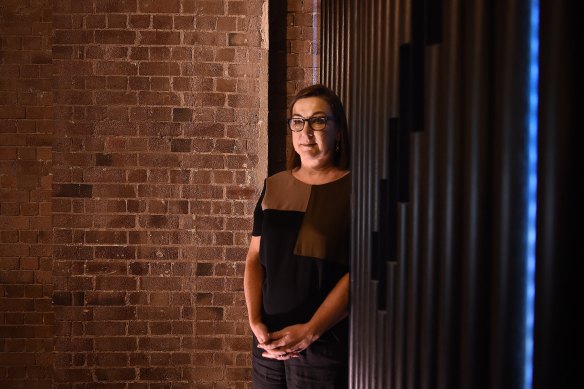
Like many news organisations, Guardian Australia gains most its revenue from advertising (more recently it rolled out a paywall, too). But more importantly, it is arguably the highest-profile mainstream media beneficiary of donor-driven journalism, a concept that involves taking money from foundations to fund particular projects or news coverage.
This concept is fairly new to the Australian market but is prolific among publishers in other parts of the world such as the US.
On the surface, donor-backed journalism looks like an easy way to keep the lights on and invest in journalism that otherwise may not take place due to financial constraints. But using the money of Australia’s richest to prop up journalism also raises an important question: can it hurt independence?
In 2016, Lenore Taylor, the then relatively new editor of Guardian Australia, was ambitious about the company’s growth plans. The local digital news website, born from the British left-leaning newspaper The Guardian, had been founded with the help of online travel rich lister Graeme Wood had been slowly building an audience and was relying on audience donations to pay its journalists. But it was financially constrained. That was until Taylor and then managing director Ian McClelland, convinced two philanthropic funds to invest in the business.
‘People who want to support public interest journalism are also the very people who believe in independence and impartiality.’
Lisa Davies, AAP chief executive
On March 18, 2018, Taylor announced the first deals: one from the Balnaves Foundation, for “balanced reporting of Indigenous issues”, and another from the Susan McKinnon Foundation, granted for reporting on “government transparency and political accountability”.
“I really wanted to grow more quickly,” Taylor says. “We saw it as a way of bringing forward journalism that we wanted to do, but we weren’t going to be able to afford to do for a while.”
Getting the money wasn’t easy. Guardian Australia needed the Australian Tax Office to allow prospective donors to claim a deduction, but also needed to set editorial guidelines to ensure the reputation of the brand would not be damaged by funding. And finding the right people to donate was hard. Encouraging progressive foundations to back left-leaning journalism made ideological sense. But all newsrooms require the trust of their readership – could commercial deals that directly covered content put that at risk?
“It took a while to kind of find the right partners, not because philanthropies wanted to interfere, but because they were used to being hands-on,” Taylor says.
Anna Draffin, chief executive of the Public Interest Journalism Institute – an independent think tank researching a future for public interest journalism in Australia – says donors are typically motivated by three things: a concern that a reduction in news undermines a healthy democracy; wanting to help a local community’s identity and resilience; and a desire for more debate and discussion on social issues such as climate change, the housing crisis or youth at risk.
In Guardian Australia’s case, it has always appeared as discussion on social issues. Most of the donor-backed content is tailored to a specific topic, and features a tag on the website that says ‘supported by’. As part of this arrangement, donors are allowed to request coverage in certain areas of interest but have no control over what actually appears (according to the website’s guidelines).
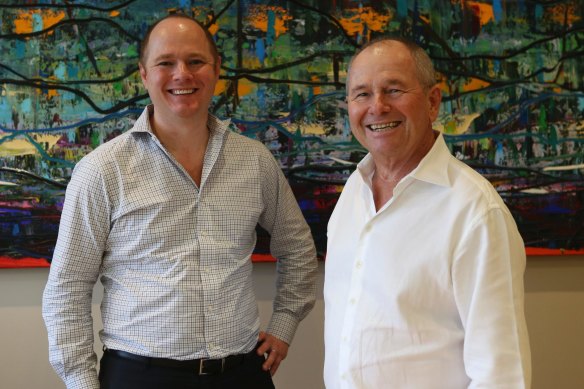
This appears harmless. But for outlets that preach independence, it can raise concerns of bias. Taylor disagrees. In the case of the Balnaves Foundation, for example, Taylor says its supportive views on The Voice have “no bearing whatsoever” on coverage.
“In the years that we’ve been working with them, they have never sought to interfere in any way and if they did, it would have to be the end of our relationship,” she says.
For his part, Hamish Balnaves, chief executive of The Balnaves Foundation, said the group chose to invest because of what he claims is the reduction in high-quality investigative journalism. He says he has “no say or influence” in the reporting.
Guardian Australia was arguably always going to cover climate change from a progressive lens, and support The Voice through opinion and analysis.
Professor Rodney Benson, chair of the department of media, culture, and communication at New York University Steinhardt, who published a study on whether foundations can solve the “journalism crisis”, said caution is always needed when reading a news article funded by someone, be it a billionaire or an advertiser.
But he says specialty news coverage tends to raise more concerns. The Bill and Melinda Gates Foundation, for example, which tends to invest on a project-by-project basis, has attracted more scrutiny than most because of its public views on key issues. “There’s been some concern that they have very strong policy agendas on educational reform, on health and global development,” he says.
The Guardian does not break out how much money it receives from philanthropy in its filings to ASIC, but people familiar with the funding claim it is less than 5 per cent of total revenue. The publication’s managing director, Dan Stinton, says he and Taylor make it clear that a donor can agree only to a broad topic area: “We make it very clear to our philanthropic partners from the outset that we can agree on a broad round, and that’s it.”
AAP’s saviour
Nearly three years ago, Australia’s largest and oldest national news wire had a potentially fatal problem: it wasn’t making money. After decades of funding, Australian Associated Press’ largest shareholders decided they could no longer afford to spend millions of dollars on something they believed wasn’t commercially viable. Nine Entertainment, the owner of this masthead, and News Corp Australia, told AAP chief executive Bruce Ellen they were shutting it down.
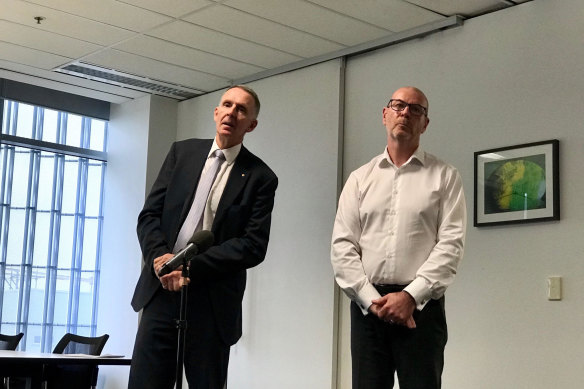
It was a decision that had the potential to significantly reduce the number of journalists in the country. But a group of philanthropists had other plans, salvaging the news wire and injecting cash into the business to keep it going.
The way AAP receives funding now compared with how it was salvaged in 2020 is very different. The majority of AAP’s philanthropic funding now comes in the form of a specialist news desk that targets underrepresented issues: the arts, the environment and agriculture, to name a few.
AAP chief executive Lisa Davies says she has strict guidelines in place that ensure donors understand they cannot intervene in the way journalists at the organisation report the news.
“People who want to support public interest journalism are also the very people who believe in independence and impartiality,” Davies says. “It actually works very seamlessly – we’ve not had any issues at all when it comes to potential interference or encouragement of a certain line.”
Davies provides donors with an annual report which typically includes how often articles are published on the websites of clients and if they were engaged with on social media. She is upfront with the way they approach key issues, such as The Voice referendum, a key topic for her newly formed Indigenous affairs desk, backed by the Snow Foundation. (This masthead has previously received funding for two Indigenous journalists from the Judith Neilsen Institute).
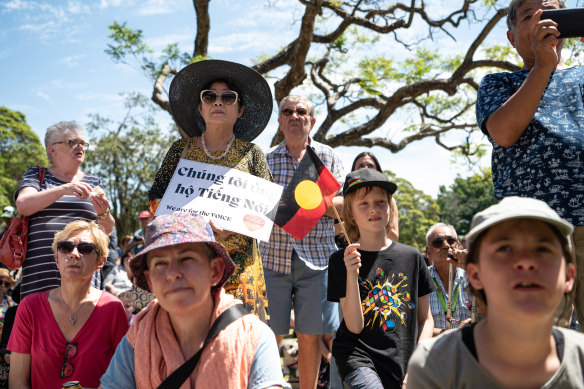
“AAP will not just cover the yes campaign, we will have to cover all areas of the campaign,” says Davies, who championed The Voice in her previous role as editor of this masthead.
Georgina Byron, chief executive of the Snow Foundation, says the one-year agreement came from a desire for unbiased, detailed coverage of Indigenous affairs in a year that also includes the referendum.
“Our rationale and reason to come to support this AAP Indigenous desk was really around this big national conversation, ensuring that accurate information is going out and that it is covering the voices of remote communities and regional communities, and not just politicians or key leaders,” she says.
Byron adds she has no expectations of the coverage as long as it is factual and unbiased.
“[AAP] have said it there’ll be around 200 news stories, 400 images… our expectation is, it’s factual, it’s fair and unbiased – we don’t want to push out bias on it either. It’s not appropriate for the funder to come in and say, you’ve got to do this.”
Tricky business
Challenges around funding run deeper than just news coverage on a topic. There are also more extreme risks such as when a donor is alleged to have been involved in unethical activities. This was the case when a humanitarian news publication called IRIN received about $US176 million ($256 million) in funding from the Hong Kong-based Jynwel Foundation, which was run by the Malaysian billionaire Taek Jho Low between 2014 and 2015.
Low’s philanthropic pledges multiplied as allegations that he was involved in a major fraud scandal began to appear in the media. His philanthropic contributions were considered a way to enhance his reputation at a time when he was under scrutiny.
Benson says transparency on who and what is spending money on journalism and stringent editorial policies are the way to uphold independence. But he says this can be tricky for smaller outlets which are trying to keep the lights on.
“If you want to get that grant renewed you’re going to self-censor, or you’re going to make it pull your punches, or you’re going to be a little cautious,” he says.
“Every ownership form or owner has their blind spots and limitations and potential problems. That’s why you need multiple funders have multiple types of funding and multiple types of owners.”
Australia’s publishing sector is transparent about the financial pressure it faces, and a weaker economy only exacerbates existing problems. The dominance of tech platforms such as Google and Meta, which receive the majority of digital ad dollars available, significant paper price increases, and soaring energy prices are just some of the challenges facing the sector.
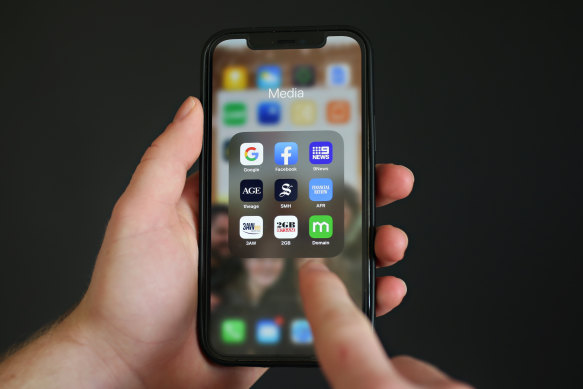
In 2021, the sector received a temporary fix: millions of dollars in funding from Meta and Google which were given to large and small news publishers for the existence of content on the platforms. But there are already early signs some of this money could dry up in the next 18 months.
In the US, donor-backed journalism is an important source of income for investigative and regional journalism. Data released by the Institute for Nonprofit News, an American-based non-profit news alliance, shows this sector has about 400 publications and 3000 journalists in the US. The amount of revenue generated by this sector is about $US500 million a year and philanthropic-backed journalism has even been recognised at the Pulitzer prize.
Most of these news centres operate under a part of the US tax code that allows them to avoid paying taxes and for donors to write off contributions. The only restriction is that they cannot endorse political candidates. In addition to the hundreds of publications birthed from philanthropy in the US, Benson says studies have found it also encourages co-operation in the sector. The New York Times, for example, has published investigations from the non-profit ProPublica.
It’s not just non-profits that are benefitting. Major news outlets including The New York Times receive philanthropic support for various projects, such as Headway, a 2020 $US4 million initiative to investigate global and national challenges.
Donor-backed journalism isn’t as common in Australia because, as Taylor found in 2018, it is hard to earn deductible gift receipt status from the Australian Tax Office. This is something the Public Interest Journalism Institute has advocated to change.
That status would enable eligible non-profit news organisations to receive donations from the public which can be deducted from the donor’s income tax.
“Regional Australia has been disproportionately affected by the volatility in news media over the past four years,” this institute’s Draffin says. “PIJI’s data shows 59 per cent of contractions skewed to regional and rural communities.
“Australia’s charity law does not currently recognise news as a public good, which prevents local communities from establishing an alternative where a commercial newspaper or radio station has closed.”
She says deductible gift recipient (DGR) status could help develop new models for public interest journalism instead. If there is a change to the status, it could boost independent journalism. But editors should err on the side of caution when it comes who and what they accept money for.
The Business Briefing newsletter delivers major stories, exclusive coverage and expert opinion. Sign up to get it every weekday morning.
Most Viewed in Business
Source: Thanks smh.com